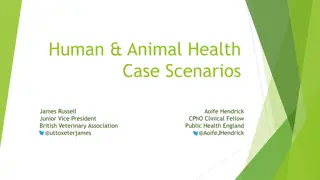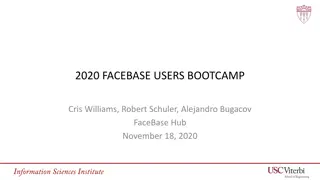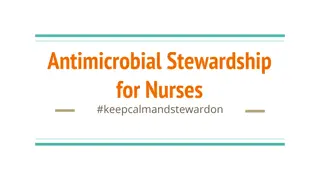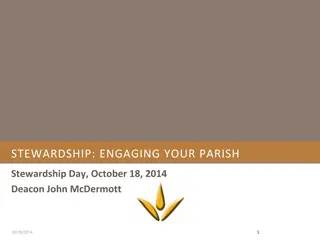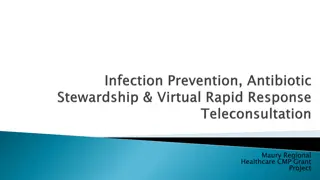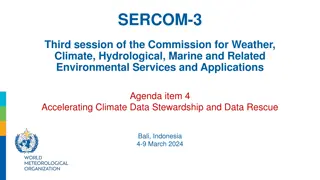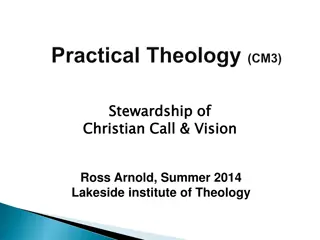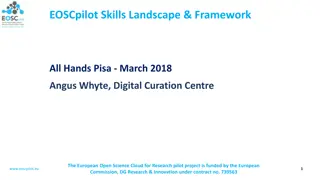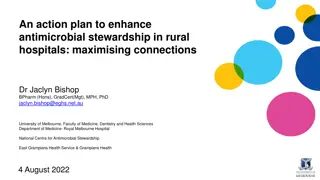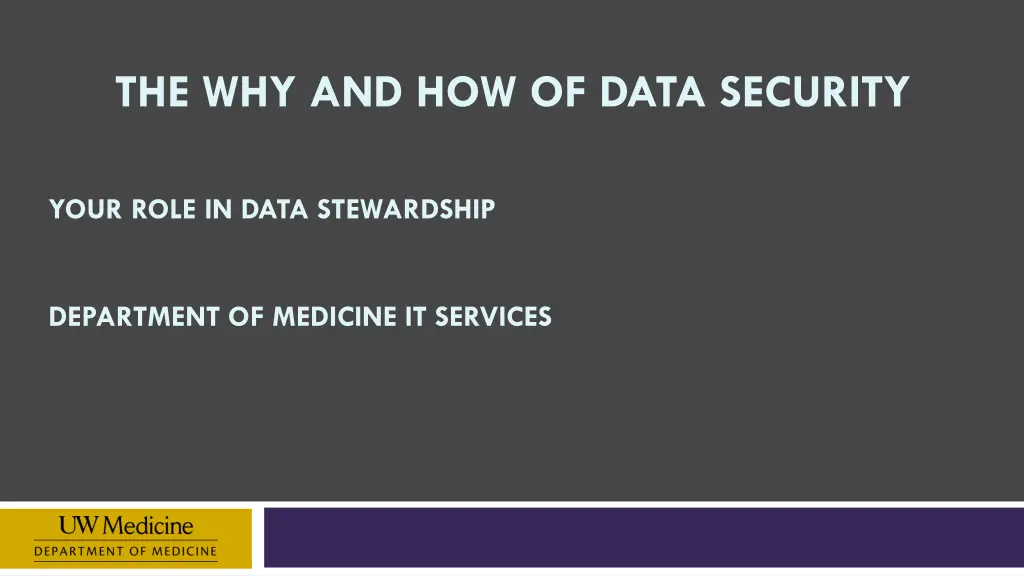
Understanding Data Stewardship in Medicine IT Services
Learn about the importance of data security and your role in data stewardship within the Department of Medicine IT Services. Discover what data stewardship involves, why it's crucial, consequences of breaches, breach definitions, decision pyramids, user responsibilities, and who to contact in case of a breach.
Download Presentation

Please find below an Image/Link to download the presentation.
The content on the website is provided AS IS for your information and personal use only. It may not be sold, licensed, or shared on other websites without obtaining consent from the author. If you encounter any issues during the download, it is possible that the publisher has removed the file from their server.
You are allowed to download the files provided on this website for personal or commercial use, subject to the condition that they are used lawfully. All files are the property of their respective owners.
The content on the website is provided AS IS for your information and personal use only. It may not be sold, licensed, or shared on other websites without obtaining consent from the author.
E N D
Presentation Transcript
THE WHY AND HOW OF DATA SECURITY YOUR ROLE IN DATA STEWARDSHIP DEPARTMENT OF MEDICINE IT SERVICES
What is data stewardship? Minimizing risk that private information falls into public hands Confidential Protection of data required by law Patient information (PHI) - Protected by HIPAA Student information (FERPA) - Individual Student Records Individual Financial Information - (e.g., credit card, bank) and Personal Information (e.g., social security #, driver s license #) Protected by Washington state s Personal Information law Personal information (Gotcha!) - (e.g., home address, personal contact information, performance reviews) Protected by Washington state s public records law Proprietary/research information - Intellectual property or trade secrets Protected by Washington state s public records law Restricted - Data that is not regulated, but for business purposes, is considered protected either by contract or best practice.
Why worry about it? Personal consequences Professional obligations HIPAA reporting cascade All breaches must be reported to feds OCR (Office for Civil Rights investigation) All individuals affected must be notified; if more than 10 lack addresses, public notice on web If more than 500 affected, media must be informed
What is a Breach? Unauthorized acquisition, access, use, or disclosure of sensitive information that compromises the security or privacy of the information. The US Department of Health and Human Services (DHHS) identifies two methods of securing PHI: Destruction Encryption No breach occurs if a compromised device is encrypted and password protected. If a device is compromised and is not encrypted and password protected, the burden of proof is on you to show there was no confidential data stored on it.
Responsibilities Everyone who is using or viewing confidential or patient information must be personally and professionally accountable for safeguarding that information. Users (YOU) are responsible for the safekeeping of data under your care. Minimize your responsibility by limiting the data under your care.
Who to Contact if a Breach Occurs? Contact Jennifer Dickey and Walt Morrison if a breach occurs. Jennifer Dickey: jennd@medicine.washington.edu; 221-5947 Walt Morrison: wmorrison@medicine.washington.edu; 616-4726
Principle: Data thrift Don t be responsible for data you don t need Only store sensitive material on mobile devices if it is absolutely necessary. Compute in place: Use internal systems (e.g. ORCA/Epic patient lists) to track information Use institutionally owned servers to store data Utilize the Department of Medicine s NetExtender SSL VPN or AMC s Juniper SSL VPN service for remotely accessing UW resources. Use a terminal server or remote desktop access to your workstation Avoid using computers you are not personally responsible for to access UW resources. Can you do it with de-identified information?
Principle: Physical security Keep paper and physical documents in a safe place Keep computers behind locked doors Keep mobile devices close at hand Lock computers while unattended. CTRL + ALT + DEL Enter Windows Key + L
Principle: Encrypted storage Encryption: scrambling data so it s practically irretrievable without the key (passphrase) All desktop and most mobile operating systems support encryption; many flash drives also include encryption software Encryption is only as strong as its passphrase Cloud storage is generally unsafe and not approved for use unless specifically approved by UW
Principle: Encrypted transport A minimally skilled hacker (or moderately skilled lawyer) can read the email you send outside of UW From addresses can easily be faked Secure web connection prevents listening in , helps verify authenticity of both parties VPN, Citrix both good options for enterprise use
Principle: Strong Passwords Use the full keyboard. Variety in character types and length makes passwords exponentially stronger. Don t use single words or names. String multiple random words together to form a long password. Random sentences are a good example. A strong password (required by policy) must: Be at least 8 characters long. Mix upper and lower case letters. Include numbers and symbols.
Smartphone/Tablet Security Use a strong password to lock the device. Enable encryption. Set an automatic lockout timer on the device. No greater than 15 minutes. Don t use cloud backup services. iOS devices Use iTunes encrypted backups (http://support.apple.com/kb/HT4946) Android devices Helium (available in the Play Store) Initiate a device wipe after 10 failed password attempts. If the device supports this Don t store data on the SIM card (contacts, SMS, etc).
Email Security All email containing Restricted or Confidential data must be secured in transport. Encrypted connections must be used between email servers. Messages between University email systems (Outpost, UW Exchange, and UW Deskmail) and some recipients are automatically encrypted. This encryption only applies to message data while it moves between servers. It likely will not be encrypted once it reaches its destination mail server. Restricted or Confidential information sent over email must be delivered to a secure system. UW Medicine maintains a list of pre-approved email systems on their site: https://security.uwmedicine.org/guidance/technical/email/approved_list.asp. Email in Outlook (and other email clients) is cached on the local machine, as are any attachments you open from email messages. This information can be retrieved offline if the local storage of the device is not encrypted.
Key points Delete anything sensitive; better yet don t copy it in the first place Keep everything you can in a safe place Encrypt anything that moves Use multiple, secure passwords Be suspicious; trust no email Spread the word!
Informational Resources Discussion Tool / Checklist for Employees https://depts.washington.edu/domweb/forms/IT_PCISADiscussionTool.pdf Privacy, Confidentiality and Information Security Agreement for all Employees (part of onboarding process/DoM IT inventory of current users) https://depts.washington.edu/domweb/forms/IT_PCISA.pdf UW Medicine Security: https://security.uwmedicine.org/ The Office of the Chief Information Security Officer for the UW provides resources on their site regarding safe computing - https://ciso.washington.edu/ Risk Advisories and Best Practices - https://ciso.washington.edu/resources/risk-advisories/ Online Training - https://ciso.washington.edu/resources/online-training/ A copy of this presentation, as well as technical documentation for securing computers and mobile devices, will be emailed to you.
Where to Get Help Department of Medicine IT Services 206.616.8805 ishelp@medicine.washington.edu




